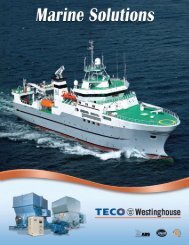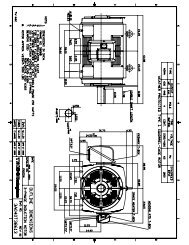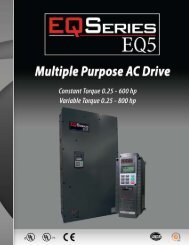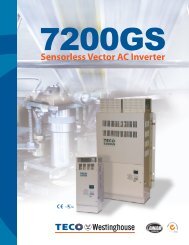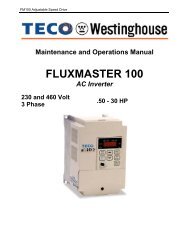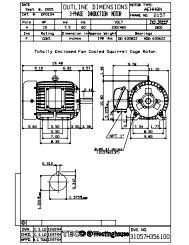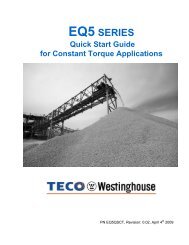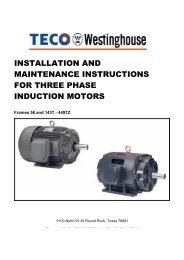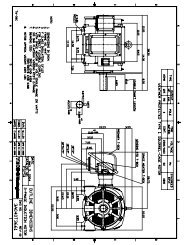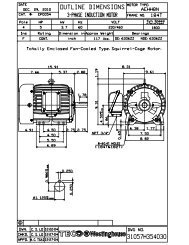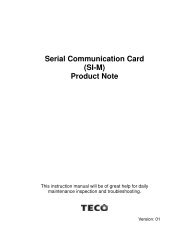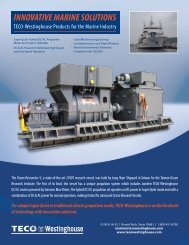EQ7 Series Instruction Manual - TECO-Westinghouse Motor Company
EQ7 Series Instruction Manual - TECO-Westinghouse Motor Company
EQ7 Series Instruction Manual - TECO-Westinghouse Motor Company
Create successful ePaper yourself
Turn your PDF publications into a flip-book with our unique Google optimized e-Paper software.
• Universal DO -- U-DO (Function code data = 27)<br />
Assigning this output signal to an inverter's output terminal and connecting the terminal to a digital input terminal of<br />
peripheral equipment via the RS-485 communications link or the fieldbus, allows the inverter to send commands<br />
to the peripheral equipment.<br />
The universal DO can also be used as an output signal independent of the inverter operation.<br />
For the procedure for access to Universal DO via the RS-485 communications link or fieldbus, refer to the<br />
respective instruction manual.<br />
• Heat sink overheat early warning -- OH (Function code data = 28)<br />
This output signal is used to issue a heat sink overheat early warning that allows for corrective action before an<br />
overheat trip 0h1 actually happens.<br />
This signal comes ON when the temperature of the heat sink exceeds the "overheat trip temperature minus 5°C<br />
(41°F)," and it goes OFF when it drops down to the "overheat trip temperature minus 8°C (46°F)."<br />
This signal comes ON also when the internal air circulation DC fan (75 HP or above for 230 V series or 125 HP or<br />
above for 460 V series) has locked.<br />
• Synchronization completed -- SY (Function code data = 29)<br />
This output signal comes ON when the control target comes inside the synchronization completion detection angle<br />
in synchronous running.<br />
For details about synchronous operation, refer to the PG Interface Card instruction manual.<br />
• Lifetime alarm -- LIFE (Function code data = 30)<br />
This output signal comes ON when it is judged that the service life of any one of capacitors (DC link bus capacitors<br />
and electrolytic capacitors on the printed circuit boards) and cooling fan has expired.<br />
This signal should be used as a guide for replacement of the capacitors and cooling fan. If this signal comes ON,<br />
use the specified maintenance procedure to check the service life of these parts and determine whether the parts<br />
should be replaced or not. (Refer to Chapter 7 of the user manual, Section 7.3 "List of Periodic Replacement<br />
Parts.")<br />
This signal comes ON also when the internal air circulation DC fan (75 HP or above for 230 V series or 125 HP or<br />
above for 460 V series) has locked.<br />
• Under PID control -- PID-CTL (Function code data = 43)<br />
This output signal comes ON when PID control is enabled ("Cancel PID control" (Hz/PID) = OFF) and a run<br />
command is ON. (Refer to the description of J01.)<br />
When PID control is enabled, the inverter may stop due to the slow flowrate stopping function or other<br />
reasons, with the PID-CTL signal being ON. As long as the PID-CTL signal is ON, PID control is effective,<br />
so the inverter may abruptly resume its operation, depending on the feedback value in PID control.<br />
When PID control is enabled, even if the inverter stops its output during operation because of sensor signals or<br />
other reasons, operation will resume automatically. Design machinery so that safety is ensured in consideration<br />
of these events.<br />
Otherwise, accidents could occur.<br />
4-91



